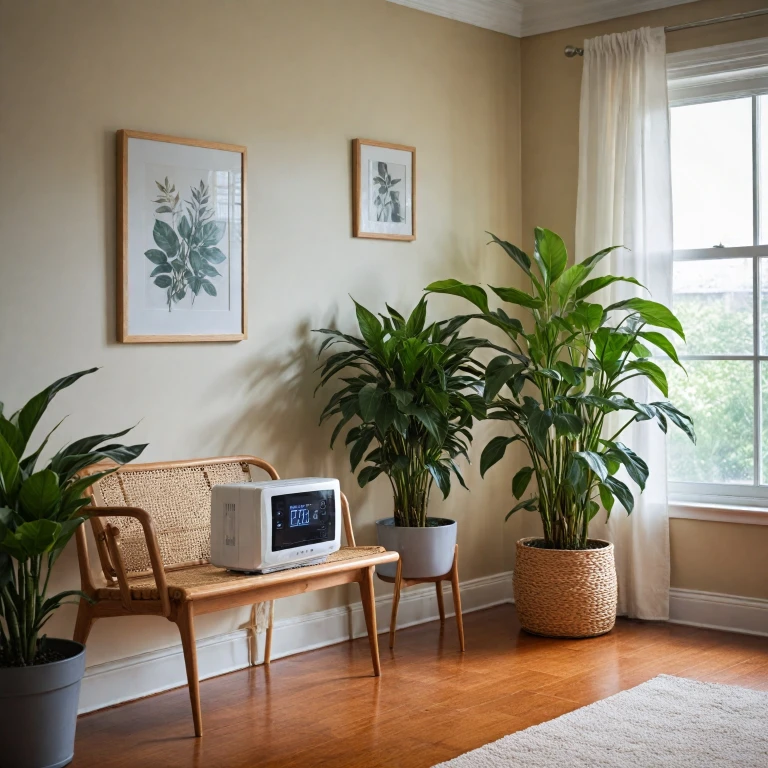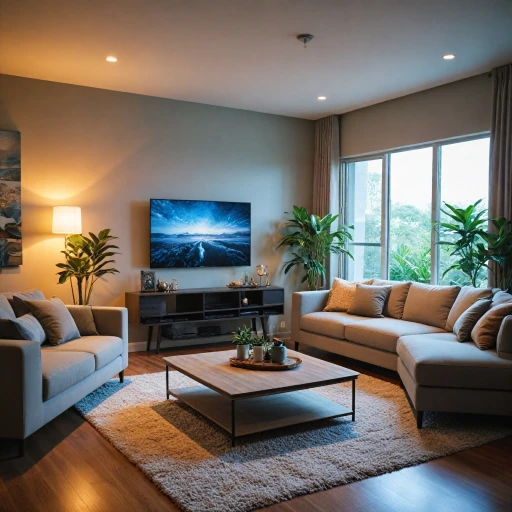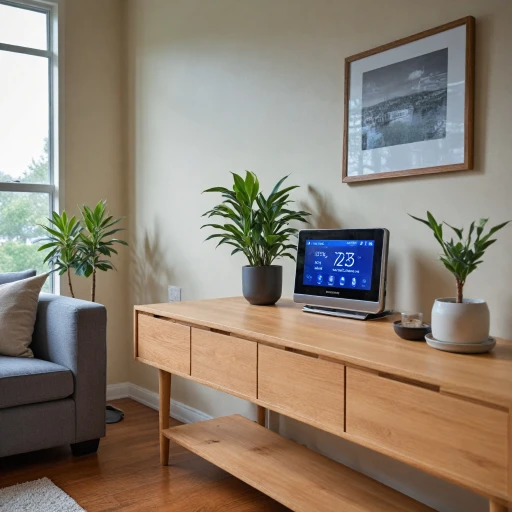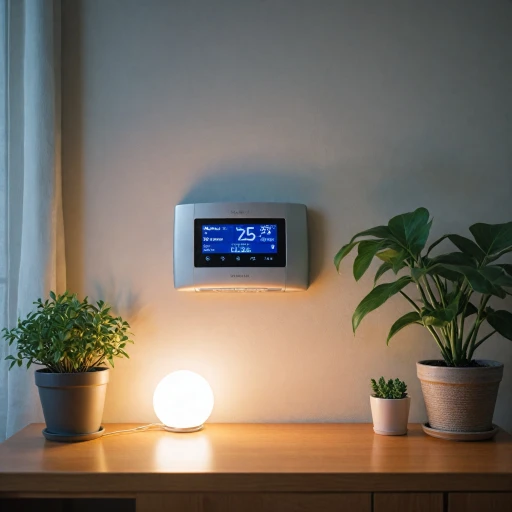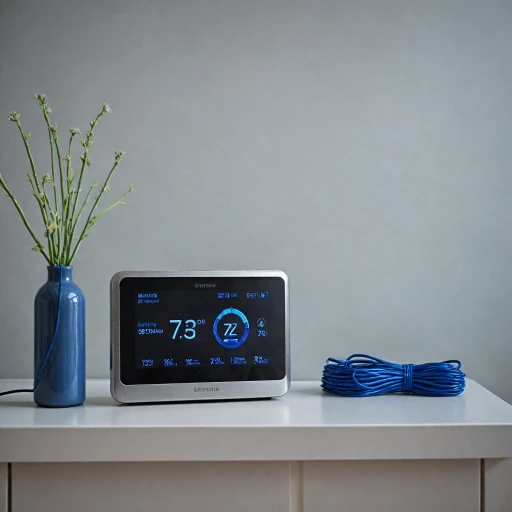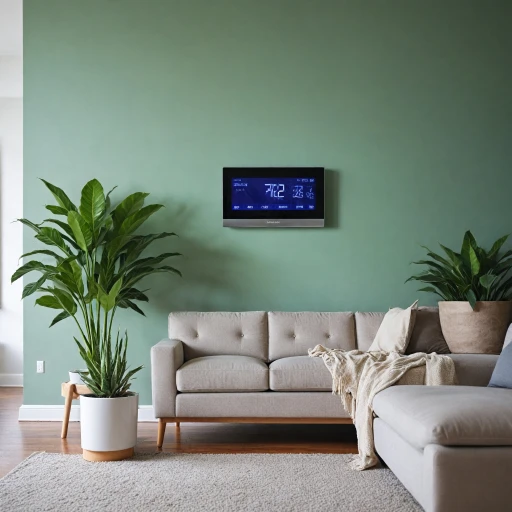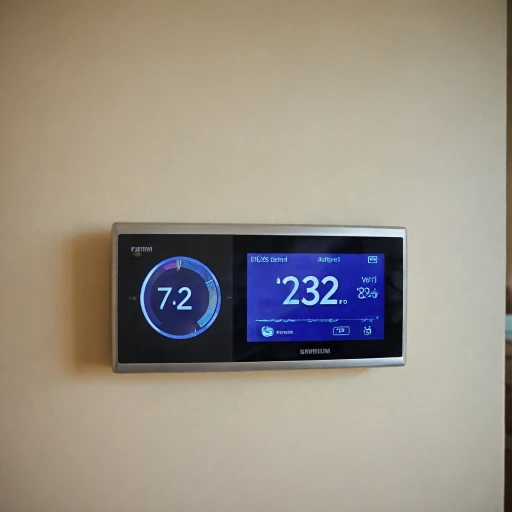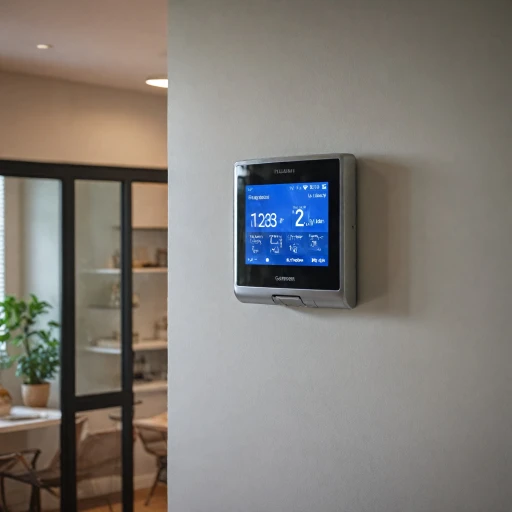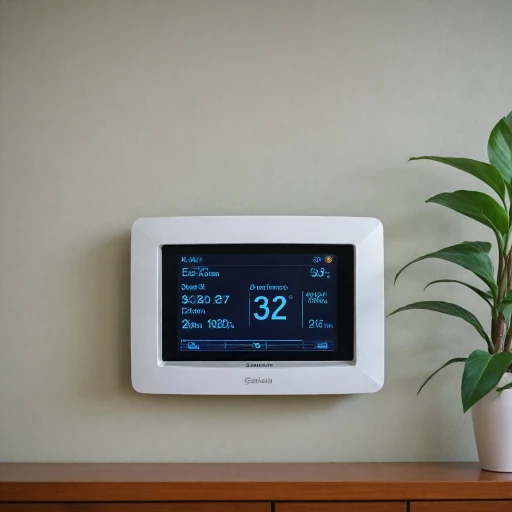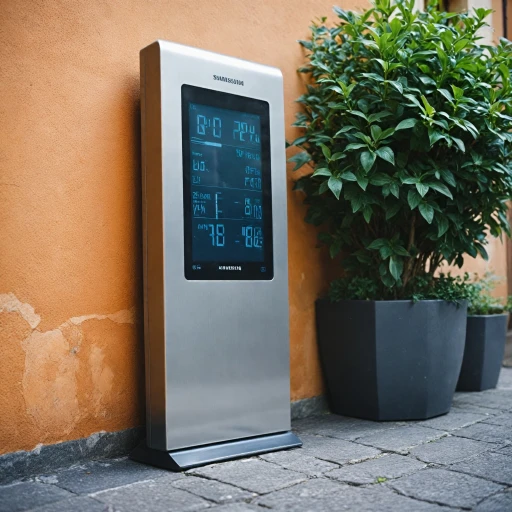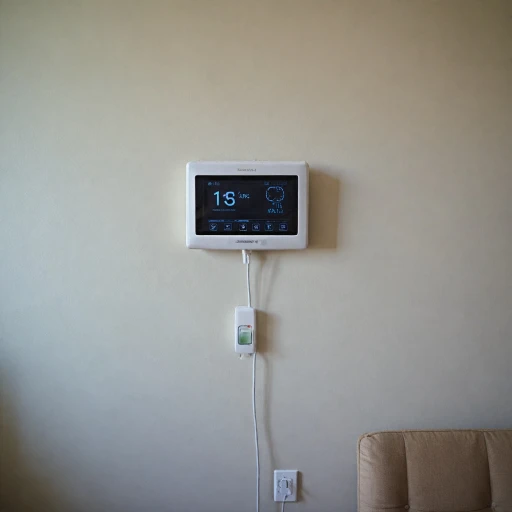
Understanding the Honeywell T6 Thermostat
An In-depth Look at the Honeywell T6 Thermostat
The Honeywell T6 Thermostat offers a sophisticated approach to managing home temperature control. This sleek device is designed to ensure your heating and cooling systems operate efficiently, making it a go-to choice for homeowners looking to optimize energy usage. One of the key features of the Honeywell T6 is its easy compatibility with diverse systems, whether you're working with a heat pump, forced air, or any other common setup. Its intelligence allows it to seamlessly adjust to your heat cool cycles, offering both convenience and comfort. The thermostat supports numerous HVAC configurations, from single-stage heating to more complex multi-stage systems. It even takes into account the nuances of a compressor contactor or auxiliary heat settings. In addition to basic temperature regulation, the Honeywell T6 goes further by incorporating emergency heat modes for those unexpected chilly nights. You can personalize and program your thermostat settings to align with your lifestyle. A focus on energy efficiency means you can reduce waste without compromising on comfort. With a detailed installer setup user experience, the Honeywell Pro T6 stands out. The inclusion of features such as a slider tab for easy navigation and the ability to control each wire assignment like the vac common or power joined configurations makes installation a breeze. For those concerned about the potential for common installation issues, later sections of this guide will offer valuable troubleshooting tips. Moreover, integrating this thermostat into your home not only promises improved climate control but also positions you well to capitalize on energy savings. If you're new to smart thermostats or considering a switch, understanding the compatibility of similar devices can foster smoother integration into your home automation ecosystem.Preparing for Installation
Gathering Necessary Tools and Equipment
To ensure proper installation of the Honeywell T6 thermostat, you’ll need to gather the right tools and have a clear idea of the setup. This might work in your favor as it makes the process seamless:- A Phillips screwdriver for unscrewing and securing wires.
- Small flathead screwdriver to adjust the slider tab and uwp system.
- Drill and drill bits for creating wall anchors if the thermostat is not mounted on a stud.
- A level to ensure the thermostat is straight.
- Wire labels or masking tape to label wires for easy installation retrieval.
- A camera or smartphone to document wiring connections could be advantageous in case of troubleshooting later.
Ensuring Power is Shut Off
Before you begin the installation process, it's essential to shut off the power to your HVAC system. This is to prevent any potential short circuits or electric shocks when working with the thermostat wiring. To do this:- Locate the circuit breaker and switch off the power to your heating and cooling system.
- Verify that the system power is off by adjusting the existing thermostat to see if the furnace or air conditioner activates.
Inspecting Your Wiring
Different homes have different wiring setups, which may impact the installation process. Identifying the system type and the corresponding wires in advance will save time:- Remove the existing thermostat cover to expose the wiring.
- Identify the wires using color coding and ensure you have common wires (C wires) if needed for thermostat power.
- Specific wires like compressor contactor wires and stage wires might be present if you have a heat pump system.
- If your system supports emergency heat or fan control, expect additional wires too.
- Use this understanding compatibility guide to ensure any smart functionalities align with your home setup.
Considerations for Special Systems
Your system type, such as a heat pump or forced air system, may require specific setup adjustments:- For heat pumps, ensure the compressor and heat stage wires are correctly identified.
- Systems with two or more stages of heating or cooling may require an installer setup (isu set) to configure the thermostat appropriately.
- Refer to the Honeywell Pro installer manual if your setup includes variable fan speed modes or multi-stage compressors.
Step-by-Step Installation Instructions
Securing Your Equipment and Turning Off Power
Before starting the installation of your Honeywell T6 thermostat, it's crucial to ensure that system power is turned off. Locate your circuit breaker and switch off power to the heating cooling systems to avoid electrical shock. Double-check that the thermostat is not receiving any form of power.
Mounting the UWP Mounting System
Once the power is off, remove your old thermostat from the wall. If you're dealing with a slightly bigger gap or different alignment, use the cover plate included with your T6 to achieve a neat installation. Attach the UWP Mounting System using screws provided, ensuring it sits level and secure.
Wiring the Thermostat
The next step involves wiring. It’s essential to understand your system type, be it forced air, heat pump, or other. Pay close attention to your old setup, noting the common wire, heat cool wires, and other relevant wiring elements. Attach each wire to its respective terminal on the UWP bracket by matching the color codes typically provided in the installation manual.
- For heat pump systems, ensure you connect the compressor contactor and emergency heat wires accurately.
- Joiner plates like the power joined slider and tab compressor might be necessary if certain setups require it.
Attaching and Securing the Thermostat
With your wiring complete, click the thermostat onto the UWP and activate the joined slider tab if applicable. This ensures that the connection is secured for operation. Make sure that all sections of the thermostat unit are firmly in place and no wires are visibly out of place.
Turning the Power Back On
Now that installation is mostly complete, turn the power back on at your circuit breaker. Allow the thermostat and related system to fully power up and initialize connections including stage vac and fan settings. Refer back to your installation guide, ensuring each cycle rate function is properly configured as per your home's requirements. If you're looking to fit a thermostat into a unique system such as an RV, make sure you're choosing the right options.
Configuring the Thermostat Settings
Adjusting Temperature and Operation Modes
After ensuring the thermostat is correctly installed on the wall, it's time to delve into configuring its settings. Begin by turning on the system power. The power button will enable the thermostat to display various options such as heat, cool, or auto. To enhance comfort, make use of the slider to easily navigate between heating and cooling modes, depending on your preference or season.Configuring System and Schedule Settings
- System Type: The Honeywell T6 is compatible with different system types including conventional systems and heat pumps, featuring stages of heating and cooling. During the setup, select the system type to ensure accurate operation.
- Schedule Programming: A key feature is its programmable schedule. Customize temperature settings for weekdays and weekends, optimizing energy efficiency. By selecting "program schedule" on the display, you can adjust the time frames using the touchscreen.
Installer Settings and Advanced Functions
To further optimize your thermostat for specific system compatibility, enter the Installer Setup (ISU) menu. This is where you input the system details:- Fan and Cycle Rates: Configure the fan operation and cycle rates. The ISU prompt allows adjustments to ensure adequate airflow and temperature maintenance.
- Emergency Heat: This setting is crucial for users with heat pump systems. Emergency heat ensures the backup heat source kicks in when necessary.
- Power Considerations: Ensure your thermostat operates correctly by reviewing power settings, including checking the connections with the compressor contactor and the stage vac for energy reliability.
Wiring and System Options
The wiring settings involve several common wires and a vac common, intertwined with the climate control system. The joined slider tab and the joined power options may need to be adjusted for seamless operation, enhancing the system's efficiency and reliability. It is important to consider these aspects to ensure proper synergy with your forced air system or other setups. Configuring the Honeywell T6 entails precision but guarantees comfort and energy savings. Leveraging these advanced configurations, your home’s climate can be managed with both ease and expertise.Troubleshooting Common Installation Issues
Dealing with Installation Challenges
Installing a Honeywell T6 thermostat can streamline your heating and cooling system, but you may encounter some common issues. Let's address them to ensure everything works correctly:- Power Issues: If your thermostat is not turning on, double-check the system power. Ensure the power joined connections are secure. If the power still doesn't flow, inspect your circuit breaker.
- Incorrect Wiring: The UWP mounting system might not be properly connected. Ensure the wires are placed in their correct slots, such as the vac common and heating cooling wires. Incorrect placement or loose connections can affect system functionality.
- Compressor and Heat Pump Problems: For setups involving heat pumps and compressor contactor systems, confirm that the joined slider aligns correctly with the compressor tabs and settings are accurate. An incorrectly set heat or emergency heat mode could disrupt your forced air system.
- Fan Operation: If the fan does not respond to the thermostat settings, check the fan set option in the installer setup. The slider tab might require an adjustment. Also, confirm the fan power connections are intact.
- Temperature and Mode Mismatches: Your thermostat might not reflect the correct air temperature or heating/cooling mode. Verify that your ISU set configurations are correct for your specific system setup, whether it’s single-stage or multi-stage.
- System Cycling Rate: If your system cycles on and off too frequently, it could be due to a misconfigured cycle rate setting. Adjust it according to your system type, whether heat cool or a specific heating cooling stage vac setup.
Addressing these common issues can facilitate a smoother installation process and help you maximize the energy efficiency of your thermostat, ensuring optimal comfort in your home.
Maximizing Energy Efficiency with Your Honeywell T6
Effective Strategies for Optimizing Energy Efficiency
Having successfully set up your Honeywell T6 thermostat, the focus now shifts to optimizing energy efficiency. By fine-tuning several settings, you can enhance the overall efficiency of your heating and cooling systems, ultimately leading to potential savings on your energy bills.1. Properly Configure Your Heat and Cooling Systems
To maximize efficiency, it's essential to configure your system settings correctly. Ensure that the heat pump or forced air systems are set to the optimal mode. The Honeywell T6 allows you to manage both the heating and cooling systems, ensuring each is running at the right capacity when required.- System Mode: Regularly check that the system mode is correctly set to heating or cooling, as necessary. Switching modes as seasons change helps maintain comfort without wasting energy.
- Temperature Schedule: Setting a regular temperature schedule according to your daily routine ensures your system isn’t working harder than needed.
2. Calibration of Thermostat and Sensors
Ensure that the thermostat's temperature readings are accurate. Sensors measuring temperature can drift over time, leading to inefficient heating/cooling cycles.- Calibration: Periodically calibrate the thermostat and ensure the ISU settings align with your home configuration.
- Sensor Adjustment: Adjust settings if discrepancies are noted between your actual room temperature and what your thermostat displays.
3. Optimal Use of Fan and Power Management
Utilizing your system's fan correctly can enhance air circulation, leading to improved temperature regulation throughout your home without engaging the compressor frequently.- Fan Control: Set the fan to 'Auto' mode to ensure it's only running when necessary, conserving energy.
- System Power Management: Regularly inspect the power supply and systems, including UWP and VAC common wires, to ensure the thermostat is functioning optimally.
4. Emergency Mode Settings and Cycle Rates
Check the settings for emergency heat mode and adjust the cycle rates for more efficient operation of your heating systems.- Emergency Heat: Make sure emergency heat settings are properly configured to function only during dire needs.
- Cycle Rate: Adjust the cycle rate to match your home's insulation characteristics, reducing wear and tear on the system.
